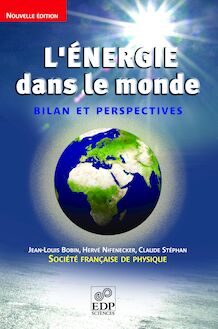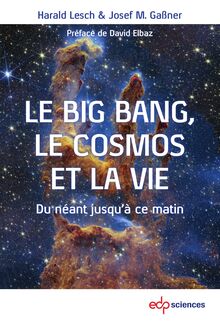-
 Univers
Univers
-
 Ebooks
Ebooks
-
 Livres audio
Livres audio
-
 Presse
Presse
-
 Podcasts
Podcasts
-
 BD
BD
-
 Documents
Documents
-
- Cours
- Révisions
- Ressources pédagogiques
- Sciences de l’éducation
- Manuels scolaires
- Langues
- Travaux de classe
- Annales de BEP
- Etudes supérieures
- Maternelle et primaire
- Fiches de lecture
- Orientation scolaire
- Méthodologie
- Corrigés de devoir
- Annales d’examens et concours
- Annales du bac
- Annales du brevet
- Rapports de stage
La lecture à portée de main
Découvre YouScribe en t'inscrivant gratuitement
Je m'inscrisDécouvre YouScribe en t'inscrivant gratuitement
Je m'inscrisEn savoir plus
En savoir plus

Description
For centuries, scientists have been fascinated by the role of the Sun in the Earth’s climate system. Recent discoveries, outlined in this book, have gradually unveiled a complex picture, in which our variable Sun affects the climate variability via a number of subtle pathways, the implications of which are only now becoming clear.
This handbook provides the scientifically curious, from undergraduate students to policy makers with a complete and accessible panorama of our present understanding of the Sun-climate connection. 61 experts from different communities have contributed to it, which reflects the highly multidisciplinary nature of this topic.
The handbook is organised as a mosaic of short chapters, each of which addresses a specific aspect, and can be read independently. The reader will learn about the assumptions, the data, the models, and the unknowns behind each mechanism by which solar variability may impact climate variability. None of these mechanisms can adequately explain global warming observed since the 1950s. However, several of them do impact climate variability, in particular on a regional level.
This handbook aims at addressing these issues in a factual way, and thereby challenge the reader to sharpen his/her critical thinking in a debate that is frequently distorted by unfounded claims.
Sujets
Informations
| Publié par | EDP Sciences |
| Date de parution | 04 mars 2016 |
| Nombre de lectures | 0 |
| EAN13 | 9782759818495 |
| Langue | English |
| Poids de l'ouvrage | 47 Mo |
Informations légales : prix de location à la page 0,0005€. Cette information est donnée uniquement à titre indicatif conformément à la législation en vigueur.
Extrait
“page˙de˙titre˙IAU” — 2014/7/21 — 11:13 — page 1 — #1
Earth’s climate response
to a changing Sun
A Guide to Effective
Coordinated by: Jean Lilensten, Thierry Dudok de Wit,Publishing in Astronomy
Katja Matthes
Editors: Thierry Dudok de Wit, Ilaria Ermolli,
Margit Haberreiter, Harry Kambezidis,
Mai Mai Lam, Jean Lilensten, Katja Matthes,
Irina Mironova, Hauke Schmidt,
Annika Sepp al a, Eija Tanskanen,
Coordinated by: Claude Bertout, Chris Biemesderfer
Kleareti Tourpali, Yoav Yair
and Agn`es Henri
17, avenue du Hoggar
Parc d’activit´e de Courtabœuf, BP 112
91944 Les Ulis Cedex A, France
COST (European Cooperation in Science and Technology) is a pan-European
intergovernmental framework. Its mission is to enable break-through scienti c
and technological developments leading to new concepts and products and thereby
contribute to strengthening Europe’s research and innovation capacities. It allows
researchers, engineers and scholars to jointly develop their own ideas and take new
initiatives across all elds of science and technology, while promoting multi- and
interdisciplinary approaches. COST aims at fostering a better integration of less
research intensive countries to the knowledge hubs of the European Research Area.
The COST Association, an International not-for-pro t Association under Belgian
Law, integrates all management, governing and administrative 10 functions
necessary for the operation of the framework. The COST Association has currently 36
Member Countries.
http://www.cost.eu/
COST is supported by the EU Framework Programme Horizon 2020
Cover illustration: Sunset observed from the International Space Station -
expedition 15 (NASA). Aurora at Svalbard, by Cyril Simon Wedlund (Aalto-University
(Finland) and IPAG-CNRS).
Printed in France
ISBN: 978-2-7598-1733-7
DOI: 10.1051/978-2-7598-1733-7
This work is subject to copyright. All rights are reserved, whether the whole or
part of the material is concerned, speci cally the rights of translation, reprinting,
re-use of illustrations, recitation, broad-casting, reproduction on micro lms or in
other ways, and storage in data bank. Duplication of this publication or parts
thereof is only permitted under the provisions of the French Copyright law of
March 11, 1957. Violations fall under the prosecution act of the French Copyright
law.
c EDP Science, 2015Contents
Foreword VII
Preface XI
PART I. INTRODUCTION TO THE SUN-CLIMATE CONNECTIONS. . . . . . .1
1.1 The Earth’s atmosphere: an introduction . . . . . . . . . . . . . . . . . . . . . . . . . . . . . . . . 3
1.2 The impact of solar variability on climate . . . . . . . . . . . . . . . . . . . . . . . . . . . . . . . 13
1.3 The Sun-Earth connection, on scales from minutes to millennia . . . . . . . . . 19
1.4 The role of the Sun in climate change: a brief history . . . . . . . . . . . . . . . . . . . 27
1.5 The role of the Sun in climate change: a societal viewpoint. . . . . . . . . . . . . .35
1.6 The debate about solar activity and climate change . . . . . . . . . . . . . . . . . . . . . 41
References of Part I . . . . . . . . . . . . . . . . . . . . . . . . . . . . . . . . . . . . . . . . . . . . . . . . . . . . . . . . 49
PART II. SOLAR AND SPACE FORCING . . . . . . . . . . . . . . . . . . . . . . . . . . . . . . . . . . 53
2.1 Basics of solar and heliospheric modulation . . . . . . . . . . . . . . . . . . . . . . . . . . . . . 55
2.2 Solar radiative forcing . . . . . . . . . . . . . . . . . . . . . . . . . . . . . . . . . . . . . . . . . . . . . . . . . . 67
2.3 Variability of solar and galactic cosmic rays . . . . . . . . . . . . . . . . . . . . . . . . . . . . . 77
2.4 Variability and e ects by solar wind . . . . . . . . . . . . . . . . . . . . . . . . . . . . . . . . . . . . 85
2.5 Variations of solar activity . . . . . . . . . . . . . . . . . . . . . . . . . . . . . . . . . . . . . . . . . . . . . . 91
2.6 Understanding solar activity . . . . . . . . . . . . . . . . . . . . . . . . . . . . . . . . . . . . . . . . . . . . 97
INFOBOX 2.1 Orbital forcing of glacial - interglacial cycles . . . . . . . . . . . . . . . . . 103
INFOBOX 2.2 Grand minima and maxima of solar activity. . . . . . . . . . . . . . . . . .111
INFOBOX 2.3 A practical guide to solar forcing data . . . . . . . . . . . . . . . . . . . . . . . 113
References of Part II. . . . . . . . . . . . . . . . . . . . . . . . . . . . . . . . . . . . . . . . . . . . . . . . . . . . . . .121IV Earth’s climate response to a changing sun
PART III. DETECTING SOLAR INFLUENCE ON CLIMATE . . . . . . . . . . . . . 127
3.1 Observations on paleoclimatic time scales . . . . . . . . . . . . . . . . . . . . . . . . . . . . . . 129
3.2 Ground-based observations . . . . . . . . . . . . . . . . . . . . . . . . . . . . . . . . . . . . . . . . . . . . 139
3.3 Satellite observations . . . . . . . . . . . . . . . . . . . . . . . . . . . . . . . . . . . . . . . . . . . . . . . . . . 155
3.4 Reanalysis data. . . . . . . . . . . . . . . . . . . . . . . . . . . . . . . . . . . . . . . . . . . . . . . . . . . . . . . .165
3.5 Uncertainties and unknowns in atmospheric observations:
How do they a ect the solar signal identi cation? . . . . . . . . . . . . . . . . . . . . . . 171
3.6 Numerical models of atmosphere and ocean . . . . . . . . . . . . . . . . . . . . . . . . . . . . 179
3.7 From climate to Earth system models. . . . . . . . . . . . . . . . . . . . . . . . . . . . . . . . . .187
3.8 Uncertainties in the modeling of the solar in uence on climate . . . . . . . . . 195
3.9 Detection and attribution: How is the solar signal identi ed and
distinguished from the response to other forcings?. . . . . . . . . . . . . . . . . . . . . .203
INFOBOX 3.1 Why are models needed in the rst place, and can they be
trusted? . . . . . . . . . . . . . . . . . . . . . . . . . . . . . . . . . . . . . . . . . . . . . . . . . . . . . 211
INFOBOX 3.2 Model Equations and how they are solved. . . . . . . . . . . . . . . . . . . .213
References of Part III. . . . . . . . . . . . . . . . . . . . . . . . . . . . . . . . . . . . . . . . . . . . . . . . . . . . . .221
PART IV. IMPACTS ON THE EARTH SYSTEM . . . . . . . . . . . . . . . . . . . . . . . . . . 227
4.1 Direct impact of solar irradiance variability . . . . . . . . . . . . . . . . . . . . . . . . . . . . 229
4.2 ‘Top-down’ versus ‘bottom-up’ mechanisms for solar-climate
coupling . . . . . . . . . . . . . . . . . . . . . . . . . . . . . . . . . . . . . . . . . . . . . . . . . . . . . . . . . . . . . . . 237
4.3 Interactions of di erent sources of variability. . . . . . . . . . . . . . . . . . . . . . . . . . .247
4.4 Impact of solar variability on the magnetosphere . . . . . . . . . . . . . . . . . . . . . . . 255
4.5 Atmospheric ionisation by solar energetic particle precipitation. . . . . . . . .261
4.6 Impact of energetic particle precipitation on atmospheric chemistry
and climate. . . . . . . . . . . . . . . . . . . . . . . . . . . . . . . . . . . . . . . . . . . . . . . . . . . . . . . . . . . .267
4.7 The impact of cosmic rays on clouds . . . . . . . . . . . . . . . . . . . . . . . . . . . . . . . . . . . 273
4.8 Impact of solar variability on the global electric circuit. . . . . . . . . . . . . . . . .281
INFOBOX 4.1 Modeled impact of total solar irradiance (TSI) forcing. . . . . . . .289
INFOBOX 4.2 Lightning, cosmic rays and energetic particles . . . . . . . . . . . . . . . . 293Contents V
INFOBOX 4.3 The in uence of solar variability on extreme weather . . . . . . . . . 297
References of Part IV. . . . . . . . . . . . . . . . . . . . . . . . . . . . . . . . . . . . . . . . . . . . . . . . . . . . . .301
PART V. CONCLUSION . . . . . . . . . . . . . . . . . . . . . . . . . . . . . . . . . . . . . . . . . . . . . . . . . . . 309
Conclusions 311
References of Part V . . . . . . . . . . . . . . . . . . . . . . . . . . . . . . . . . . . . . . . . . . . . . . . . . . . . . . 320
Glossary 321
The authors 341FOREWORD
1Roger-Maurice Bonnet
1 Why did I accept to write this foreword?
As former solar astronomer, and member of the Service d’Aeronomie of CNRS
in France (now renamed LATMOS), I am since long deeply involved in { and
motivated to { understanding the role of the Sun on the Earth’s climate. However,
when Thierry contacted me for writing this foreword, I had some hesitations before
answering positively. The response of our climate to the changing Sun has been
passionately debated at length among the concerned scientists, solar physicists,
meteorologists, climatologists, and many non-specialists, and these debates often
made me uncomfortable. The topic deserves indeed a lot of care and its scienti c
analysis an utmost rigor, both too easily overwhelmed by irrationalism and passion.
Why that passion? The issue is not the Sun, a modest G-type star fairly well
understood, but rather the climate of our Earth, the most complex of all planets
in the Solar System because it is a water planet, because it has an atmosphere and
hosts life, particularly human life, the whole set resulting in an incredibly complex
system permeated by complex interactions, which make other planets, like Mars
for example, look very simple. That is where the problem lies!
The 20th century has witnessed a quasi-exponential growth of the world
population followed by a similar growth of the demand on energy necessary to sustain
its needs, and of course on fossil fuels, the cheapest source and admittedly the
largest producer of CO , whose e cient greenhouse e ect might be the most pow-2
erful cause of the changes observed in the recent evolution of the Earth’s climate.
Hence the debate! Those who trust in a solar e ect are right: nobody would
argue that without the Sun, life would not exist on Earth in its present form at
least. Nobody would argue against Milankovic’s theory that describes the
collective e ects of changes in the Earth’s orbital movements upon the climate, and
that winters are colder than summers. On the other side, few would argue against
-
 Univers
Univers
-
 Ebooks
Ebooks
-
 Livres audio
Livres audio
-
 Presse
Presse
-
 Podcasts
Podcasts
-
 BD
BD
-
 Documents
Documents
-
Jeunesse
-
Littérature
-
Ressources professionnelles
-
Santé et bien-être
-
Savoirs
-
Education
-
Loisirs et hobbies
-
Art, musique et cinéma
-
Actualité et débat de société
-
Jeunesse
-
Littérature
-
Ressources professionnelles
-
Santé et bien-être
-
Savoirs
-
Education
-
Loisirs et hobbies
-
Art, musique et cinéma
-
Actualité et débat de société
-
Actualités
-
Lifestyle
-
Presse jeunesse
-
Presse professionnelle
-
Pratique
-
Presse sportive
-
Presse internationale
-
Culture & Médias
-
Action et Aventures
-
Science-fiction et Fantasy
-
Société
-
Jeunesse
-
Littérature
-
Ressources professionnelles
-
Santé et bien-être
-
Savoirs
-
Education
-
Loisirs et hobbies
-
Art, musique et cinéma
-
Actualité et débat de société
- Cours
- Révisions
- Ressources pédagogiques
- Sciences de l’éducation
- Manuels scolaires
- Langues
- Travaux de classe
- Annales de BEP
- Etudes supérieures
- Maternelle et primaire
- Fiches de lecture
- Orientation scolaire
- Méthodologie
- Corrigés de devoir
- Annales d’examens et concours
- Annales du bac
- Annales du brevet
- Rapports de stage




















